Happy #SwordLesbianSaturday ! Today for this @MuseumBuddy collaboration between @ShibdenHall @BankfieldMuseum and I exploring LGBTQI connections we combine Anne Lister's legacy with my special interest in swordswomen and arms & armour! To ask... #WasAnneListeraSwordLesbian?
Wait back up...sword lesbians? And the answer is: yes. I am an art historian, curator, artist and a fencer (albeit definitely still a beginner) interested in sharing histories and creating stories around women with swords as well as feminist/queer perspectives in arms & armour!
You may be thinking that's niche. Well yes and no. When I talk about sword lesbians I'm talking about a general framework of research exploring the historical and cultural legacies of women with swords challenging gender and sexual norms. And there is some STUFF to explore there!
And within research on women with swords as historical and legendary figures (which sometimes do toe the line between fact and fiction) we do have several instances of longsword lesbians and bisexuals of the blade alongside swordfighters we can interpret as trans or non-binary!
You can find out about one of them, bisexual icon Julie d'Aubigny who was a duellist as well as an opera singer, via my podcast @bustleswordpod ! This swashbuckling heart-breaking bisexual of the blade could have been good friends with Anne if they weren't born centuries apart
Having a queer and women-focused look at arms & armour is also good way of affirming what many historical re-enactors and fencers already know: women have always been able to fight and we should find new ways of uncovering these legacies in museums and heritage (hire me museums)
My work making LGBTQI narratives visible in museums and heritage means the two often intersect in interesting ways. The idea #WasAnneListeraSwordLesbian was originally a playful thought exercice about combining my work with the amazing work done at @ShibdenHall @BankfieldMuseum !
But I was delighted to discover this week that #WasAnneListeraSwordLesbian could be manifesting as yet another insight into the way Anne challenged sexual and gender norms of her time, taking up traditionally "masculine" activities!
It stands to reason to imagine that our travelling, outdoorsy, hands-on Anne Lister might be interested in sports that would not have been seen as conventional for many women to partake in at the time...
(Bearing in mind that Anne Lister-wise here we're focusing on 19th century Europe here, and that swordfighting in numerous cultures relating to women varies a lot.)
16th century/17th century historical swordfighting treaties did show proof women were also openly taught swordfighting but the ability to do so would not have neccessarily been as open or accessible depending on your social status and the opportunities you were given.
This is also somewhat skewed by the fact that we have access to accounts of exceptional women (often royal or noble women) but little insight into what working-class women would have had access to. We also have a lot of narratives of women taking on masculine disguises to fight..
We actually do have records of 19th century women duelling - including an all-women's topless duelling match which is amazing for MANY reasons (toplessness is the LEAST interesting one) called the First Emancipated Duel (which I will cover in a future podcast episode..stay tuned) 

And while many fencing salles opened to include women in the 19th century as swordfighting was streamlined into a sporting discipline, you'd have to wait till 1924 for women to be included in fencing at the Olympic Games 

Back to Anne. Given her well-travelled nature, it's would be possible to imagine that she found a way to access the sport more widely in Europe, maybe in Paris...But interestingly enough...when a mention of learning swordfighting is mentioned in her diaries in 1809 she's only 18!
YES! YOU HEARD ME! We have...EVIDENCE of Anne both owning a sword and learning how to use one! A huge thank you to @skgway for uncovering these following passages...again showing how amazing the #AnneListerCodeBreaker community is in decrypting and sharing Anne's legacy!
"8 May 1809: I with nothing on but my night jacket over my shift my stocking & nightcap on took the pistols loadened with ball which were ready under my pillow & a sword went with him & my mother upstairs"
https://twitter.com/skgway/status/1296473525910478849
As @skgway points out here, this is after hearing a man upstairs and investigating...which I find funny because my housemates always joke that if someone broke in I could valiantly protect them with my longsword
And then (interestingly later on rather than pre- "I'll use a sword against an intruder" mention) we have this: 20 June 1809, Bernard Maguire a private in the 6th D.G [Dragoon Guards], “gave me my first Lesson in the broad sword exercise"!! Amazing!
https://twitter.com/skgway/status/1296473651735334912
It's worth saying that if anyone who is an #AnneListerCodeBreaker has any additional information re: Anne Lister and swords, please do add to this! I would absolutely love to have more information on this aspect of Anne's life!
Now a short break before returning to exploring the types of swords both within and beyond the @BankfieldMuseum collection which Anne may have potentially wielded!
I will leave you with this: a deleted scene from #GentlemanJack showing a younger Anne Lister doing dramatic sword lesbian shenanigans on a roof shared by @jessicampayne ! Thanks so much!
https://twitter.com/LookoutPointTV/status/1246089441053224960
And we're back! Happy #SwordLesbianSunday because if anyone deserves two days of the week...it's sword lesbians! Starting off with some stunning swords from the @BankfieldMuseum collection, part of the Duke of Wellington Regimental Museum onsite!
museums.calderdale.gov.uk/visit/duke-wel…
museums.calderdale.gov.uk/visit/duke-wel…
Within it this Volunteer Rifle Officer’s sword, 1830s/40s. Based on other swords like it we can assume it was a sword made for officers of that particular Volunteer Rifles unit (home defense volunteers trained to be army reserves) used by infantry (soldiers fighting on foot) 

The grip (the part of the handle that you well...grip) is made of wire-wrapped fish-skin, a naturally rough surface that would have been practical as well as decorative - and the blade has these ornate engravings...including the word "Halifax!" 

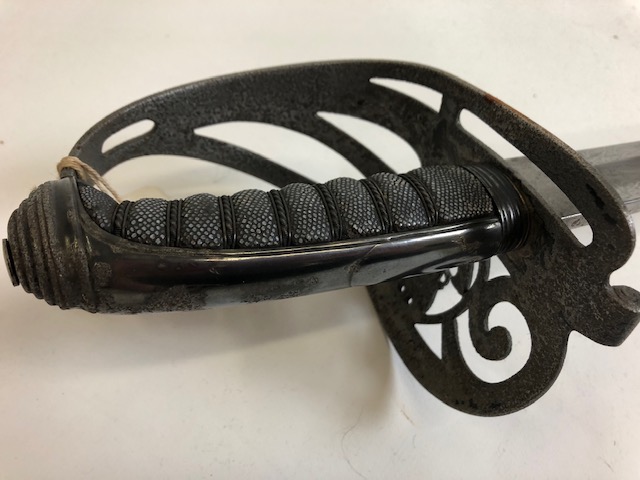

You may be wondering why I'm showing you this sword, other than the fact that swords are awesome. Well, backtrack to Anne saying he had her first "broad sword" lesson from a member of the Dragoon Guard (which is a heavy cavalry guard fighting on horseback)
A broadsword could make you think of a sword like this one from @Royal_Armouries - double-edged and two handed. The problem is that this is a weird association whose origin is unclear and which was perhaps perpetuated by fantasy/movies
collections.royalarmouries.org/object/rac-obj…
collections.royalarmouries.org/object/rac-obj…
What the broad sword actually would have referred to most generally in Anne's time would have been a (usually) double edged sword with a large "basket" hilt on the guard that could protect your hand while fighting which you fought with in one hand, mostly used by the military
More specifically cavalry who would have used its design meant to cut and thrust at their advantage! And given Maguire who gave Anne her first lesson was a private part of the Dragoon Guards, you can conclude he was maybe teaching Anne to fight with a sword type he used to fight.
Here is a much earlier Dragoon sword from the National Army Museum to give you an idea of what it looked like...
collection.nam.ac.uk/detail.php?acc…
collection.nam.ac.uk/detail.php?acc…
Looking at fencing manuals from the 18th century, fencing with a broadsword to learn how to duel as a civilian (so not in a military context) rather than a light smallsword would have been uncommon but not unheard of you can find 18th c Scottish manuals referring to it 
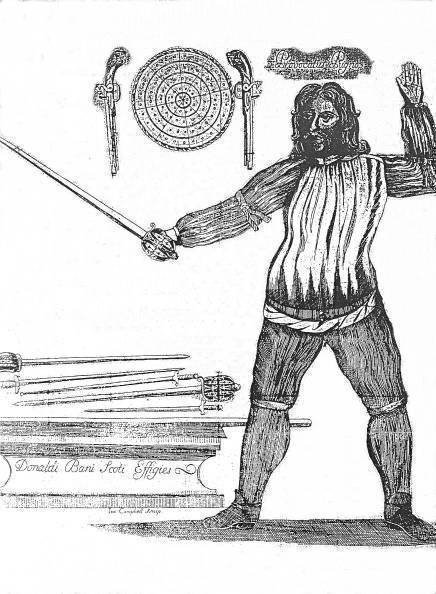
This also wouldn't have corresponded to the way most would learn fencing by the early 19th century - the foil had already been invented mid-18th century, made for fast movement and thrusting (it was also blunted - the button on the tip in French led to "fleuret" - flower bud)
Given Anne took this up in 1809, it's interesting to know what motivated her learning to wield THIS sword. Simple practicality (that's what Maguire had to teach her with, so that's what they went with?). Desire to fence with a bigger heavier sword, which does sound like Anne?
So while the sword above is not the one she would have neccessarily fenced with, we can appreciate the fact that Anne probably took advantage of the skilled military based in Halifax to learn new swordfighting skills...
This said there's much we don't know just as we cannot be sure what the full story is behind this mid-19th century Italian sword from the collection. On her many travels Anne travelled to Italy with her Parisian lover the widower Maria Barlow (and her own aunt, also called Anne) 



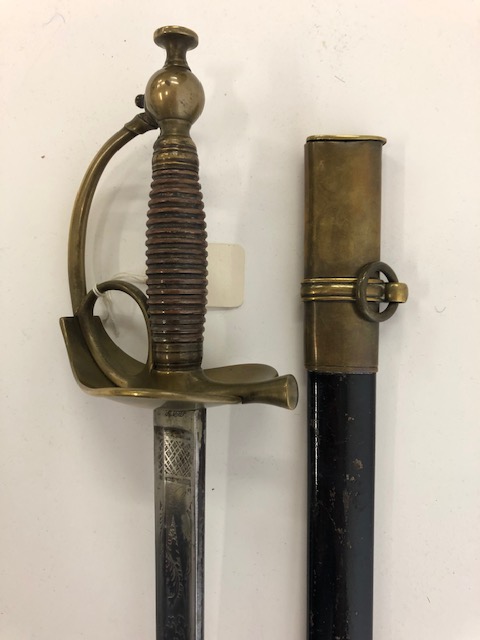
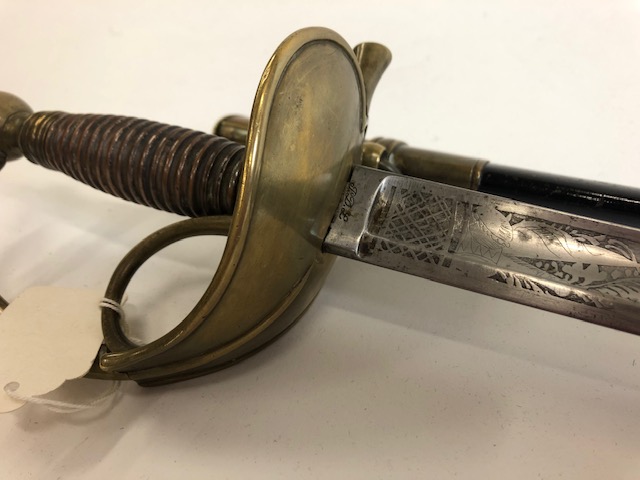
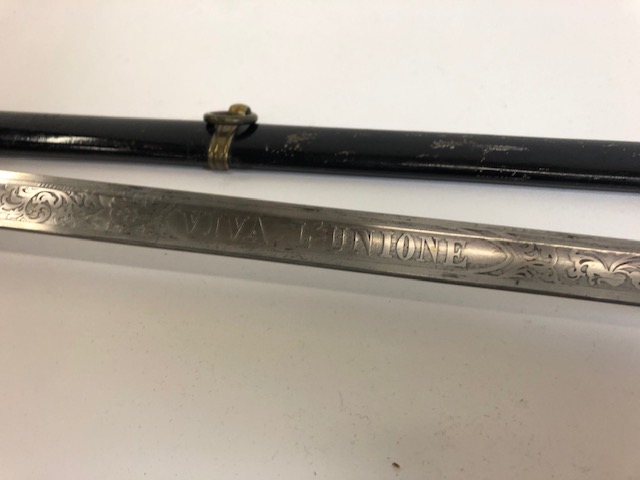
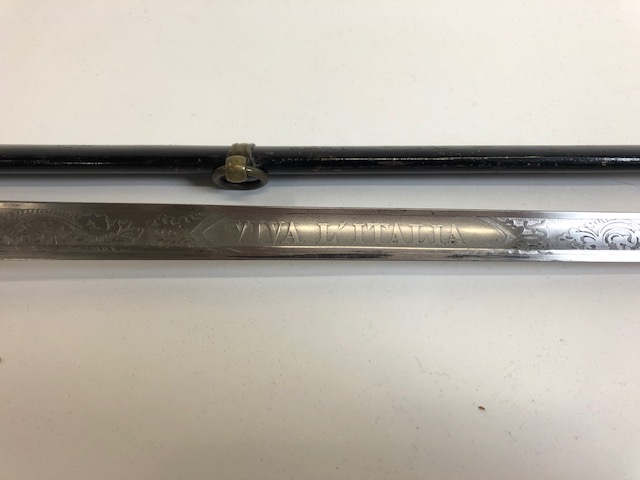
There is no connection between this sword and Anne's travels we know of but it reminds me of the many stories of women with swords in Europe and beyond that took up arms and sought out freedom from the norms of their time in so many different ways that still inspire us today!
Let's conclude with a swashbuckling flourish: spot the sword at @ShibdenHall ! It was installed there likely long after Anne's death...but after this thread, I feel she would greatly approve of its presence... #WasAnneListeraSwordLesbian ? She definitely has earned the title...⚔️ 

@threadreaderapp unroll please
• • •
Missing some Tweet in this thread? You can try to
force a refresh





